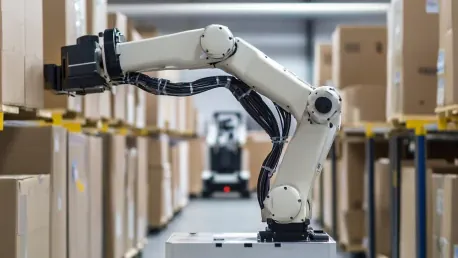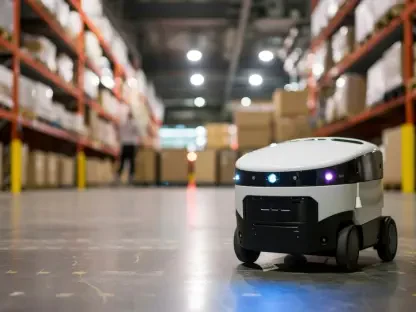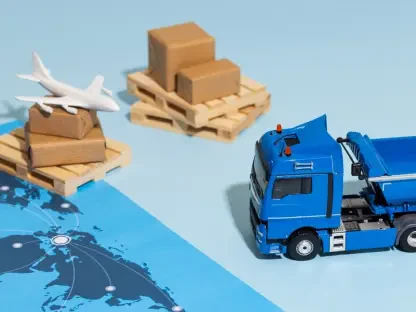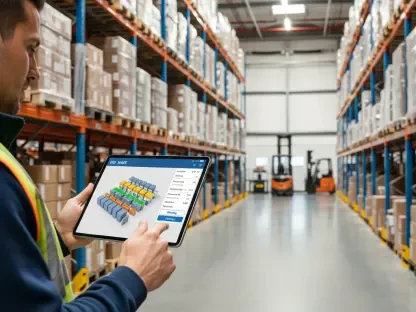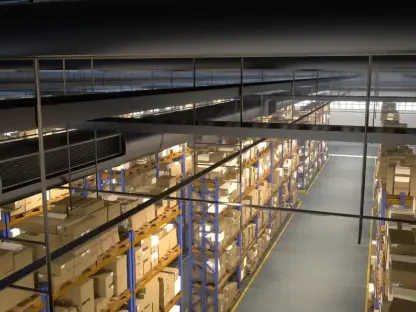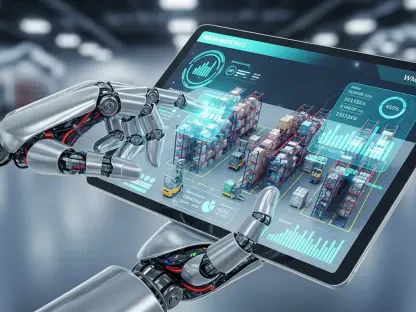The ProMat 2025 expo once again showcased groundbreaking advancements in warehouse automation, focusing on robotic order picking systems. This biennial event highlights major strides in material handling and logistics technologies. Numerous industry leaders introduced innovations that promise to revolutionize the landscape of order fulfillment. Held in Chicago, ProMat 2025 brought together industry experts, showcasing the latest technological advancements designed to streamline and enhance warehouse operations profoundly. These developments are poised to redefine the standard for order picking, robustly integrating artificial intelligence (AI) and vision technologies to boost efficiency and accuracy.
The Push Towards Full Automation
The push towards fully automated robotic picking systems was a notable theme. Advanced vision technologies and artificial intelligence (AI) are playing pivotal roles in these advancements. These breakthroughs are enhancing the performance of existing robotic automated storage and retrieval systems (AS/RS) and ushering in all-new solutions that aim to maximize efficiency and accuracy in order picking. One prominent example shared at the expo was the AutoStore system, which employs a high-density grid setup that emphasizes the “goods-to-person” approach. This system allows robots to deliver goods to designated workstations where human operators pick from them. This grid mechanism significantly optimizes space utilization, ensuring maximum storage density.
AutoStore’s latest innovation, a robotic picking cell developed in collaboration with Berkshire Grey, signifies a landmark shift towards fully integrated in-house robotic solutions. This new addition features a smart robotic arm capable of scaling efficiently within the AutoStore framework. This innovation marks a pivotal transition from integrator-led projects to entirely automated and smoothly integrated robotic solutions. The enhanced system suggests that AutoStore is moving towards an era where warehouse automation transcends conventional boundaries and fully embraces robotic intelligence for optimizing operational workflows.
Enhanced Capabilities of Autonomous Mobile Robots
Locus Robotics has also made significant advancements with their autonomous mobile robots (AMRs). Traditionally, their AMRs collaborated with human pickers to reduce manual labor in warehouses. At ProMat 2025, Locus unveiled their new Array system, an AI-powered solution designed for zero-touch fulfillment. This represents a crucial step towards complete automation by minimizing human intervention in the picking process. Array integrates tightly with Locus Robotics’ existing fulfillment software, working collaboratively with their fleet of AMRs to streamline the order picking process even further.
The zero-touch solution propounded by Locus Robotics signifies an evolution in autonomous order fulfillment. By incorporating AI-driven analytics and machine learning algorithms, the Array system adapts to dynamic warehouse conditions, optimizing its routes and pick sequences continuously. This innovation enhances productivity and reduces potential human error, leading to faster and more accurate order fulfillment. This breakthrough epitomizes the growing trend towards minimizing human touchpoints within warehouses, paving the way for more efficient, autonomous operations that redefine traditional labor-intensive practices.
Exotec’s SkyPod system stands out with its recent upgrades. The system, featuring a more compact robot and autonomous robot-to-robot picking capabilities, enhances throughput and storage density. This innovation earned it the “robot of the year” title, underscoring its potential to dramatically increase productivity within robotic AS/RS frameworks. The compact robot design allows SkyPod to maneuver more efficiently within confined spaces, enhancing speed and precision in picking tasks while maximizing vertical storage utilization.
Approaches to Boost Productivity
Attabotics presented their Fulfill system, which utilizes a many-to-many picking approach. This method is more efficient than traditional one-to-one picking, allowing workers to pick multiple SKUs for various orders simultaneously. Integrating put-to-light technology, the system enhances throughput and reduces labor dependence by up to 80%, showcasing its potential to revolutionize manual picking. The many-to-many approach enables warehouse operators to handle multiple orders concurrently, significantly improving operational workflows and reducing idle time.
Brightpick took the stage with their Giraffe robot, as explained by CEO Jan Zizka. The Giraffe robot, designed for high-efficiency storage picking, works in tandem with Brightpick’s existing Autopicker AMRs. This innovation facilitates higher storage density and streamlined order consolidation, promoting a unified and efficient fulfillment system. The Giraffe robot operates effectively at various heights, enhancing the capacity within vertical storage setups and enabling swift retrieval of items across different levels.
Brightpick’s focus on creating a cohesive fulfillment system aims to reduce the need for extensive integration or customization, making robotic automation more accessible and user-friendly for their clients. This approach also exemplifies the rising trend towards modular, scalable robotic solutions that adapt seamlessly to multifaceted warehouse conditions, providing robust support for diverse operational needs across different industries.
Industry Trends and Technological Maturity
The trends clearly indicate an industry-wide shift towards higher levels of warehouse automation. The advancements presented by these leading companies reflect a growing consensus that while fully autonomous, lights-out warehouses may not be immediately on the horizon, substantial portions of order fulfillment can be efficiently automated and integrated. This shift towards augmented automation is steering the warehouse industry into a new era of precision and efficiency, leveraging AI and vision technology advancements to redefine operational benchmarks.
The move towards smarter and more adaptive automation is consistent across the board. This trend aligns with the goals of increasing efficiency, maximizing storage capacity, and minimizing reliance on human labor. The integration of sophisticated AI and vision technologies suggests a future where warehouses operate with unprecedented precision and speed. The advancements showcased at ProMat 2025 highlight the potential of AI to continuously adapt and optimize robotic functions within dynamic warehouse environments, ensuring consistent and reliable performance.
As technology matures, many industry leaders are finding new ways to integrate these innovations seamlessly within existing frameworks. The shift towards automated order fulfillment methods underscores the necessity for adaptable robotic solutions that can easily integrate with a variety of warehouse management systems. This adaptability is key to ensuring that automation solutions remain relevant and effective in meeting the evolving demands of modern warehouse operations.
Reflecting on the Innovation Landscape
The ProMat 2025 expo once again highlighted groundbreaking advancements in warehouse automation with a particular emphasis on robotic order picking systems. This biennial event provides an essential platform for showcasing significant progress in material handling and logistics technologies. Industry leaders unveiled a range of innovations that promise to revolutionize the order fulfillment sector. Hosted in Chicago, ProMat 2025 attracted industry experts from around the globe, all eager to display the latest technological advancements aimed at streamlining and profoundly enhancing warehouse operations. New developments unveiled at the expo are expected to set new standards for order picking by robustly integrating artificial intelligence (AI) and vision technologies. These technologies are designed to significantly boost efficiency and accuracy, making warehouse operations more streamlined and productive. ProMat 2025 serves as a crucial stage for the logistics and material handling industry, demonstrating how cutting-edge technologies can transform the landscape of warehouse management.
